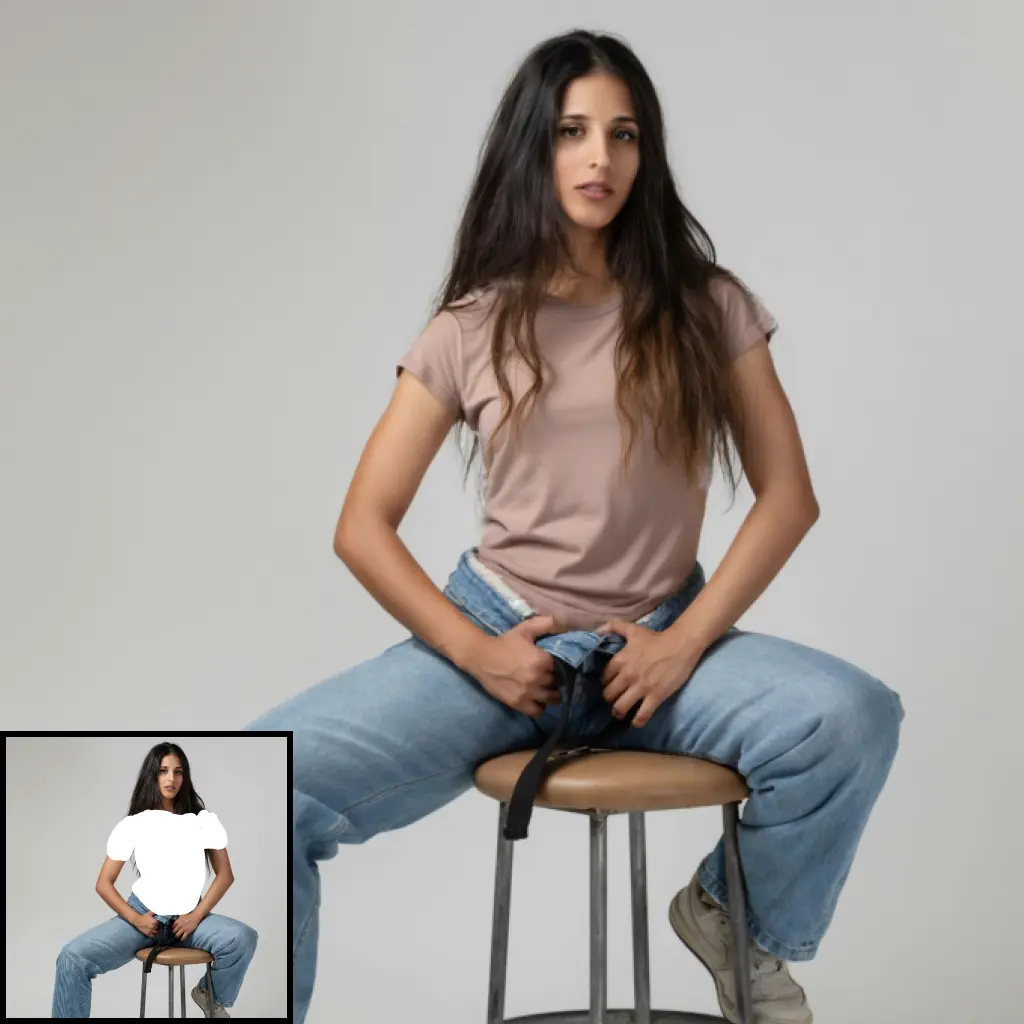ComfyUI Node: Perlin Power Fractal Noise (PPF Noise)
Perlin Power Fractal Latent (PPF Noise)
Categorylatent/noise
WASasquatch (Account age: 4910days) Extension
PPF_Noise_ComfyUI Latest Updated
2024-06-14 Github Stars
0.02K
- Description
- Perlin Power Fractal Latent (PPF Noise):
- Perlin Power Fractal Latent (PPF Noise) Input Parameters:
- Perlin Power Fractal Latent (PPF Noise) Output Parameters:
- Perlin Power Fractal Latent (PPF Noise) Usage Tips:
- Perlin Power Fractal Latent (PPF Noise) Common Errors and Solutions:
- Related Nodes
How to Install PPF_Noise_ComfyUI
Install this extension via the ComfyUI Manager by searching for PPF_Noise_ComfyUI- 1. Click the Manager button in the main menu
- 2. Select Custom Nodes Manager button
- 3. Enter PPF_Noise_ComfyUI in the search bar
Visit ComfyUI Online for ready-to-use ComfyUI environment
- Free trial available
- 16GB VRAM to 80GB VRAM GPU machines
- 400+ preloaded models/nodes
- Freedom to upload custom models/nodes
- 200+ ready-to-run workflows
- 100% private workspace with up to 200GB storage
- Dedicated Support
Perlin Power Fractal Noise (PPF Noise) Description
Generate intricate noise patterns with power fractal techniques for artistic applications, offering rich visual output.
Perlin Power Fractal Latent (PPF Noise):
The Perlin Power Fractal Latent (PPF Noise) node is designed to generate complex and visually appealing noise patterns using the Perlin noise algorithm, enhanced with power fractal techniques. This node is particularly useful for creating intricate textures and patterns that can be used in various artistic applications, such as digital art, procedural texture generation, and more. By leveraging the power of fractals, this node allows you to produce noise with multiple layers of detail, offering a rich and dynamic visual output. The main goal of this node is to provide a versatile tool for artists to explore and create unique noise-based designs, enhancing their creative projects with depth and complexity.
Perlin Power Fractal Latent (PPF Noise) Input Parameters:
batch_size
The batch_size parameter determines the number of noise maps to generate in a single batch. This is useful for creating multiple variations of noise patterns simultaneously, which can be beneficial for batch processing or generating a series of related textures. The default value is typically set to 1, but it can be adjusted based on your needs.
width
The width parameter specifies the width of the generated noise map. It defines the horizontal resolution of the output, affecting the level of detail and the aspect ratio of the noise pattern. The minimum value is 1, and there is no strict maximum, but it should be set according to the capabilities of your hardware.
height
The height parameter defines the height of the generated noise map, similar to the width parameter. It determines the vertical resolution and, together with the width, sets the overall size of the noise pattern. The minimum value is 1, and like width, it should be set based on your hardware's capabilities.
resampling
The resampling parameter allows you to choose the method used to resize the noise map. Options include "nearest-exact", "bilinear", "area", "bicubic", and "bislerp". Each method offers different trade-offs between speed and quality, with "nearest-exact" being the fastest and "bicubic" providing smoother results.
X, Y, Z
The X, Y, and Z parameters are used to offset the noise pattern in three-dimensional space. These offsets allow you to shift the noise pattern along the respective axes, enabling the exploration of different sections of the noise space. This can be useful for creating animations or variations in the noise pattern.
evolution
The evolution parameter controls the progression of the noise pattern over time or iterations. It is particularly useful for creating animated noise effects, where the pattern evolves smoothly from one frame to the next.
frame
The frame parameter is used in conjunction with evolution to specify the current frame or iteration of the noise pattern. It helps in synchronizing the noise evolution with other time-based elements in your project.
scale
The scale parameter adjusts the overall size of the noise features. A smaller scale results in larger, more pronounced features, while a larger scale produces finer, more detailed patterns. This parameter is crucial for controlling the granularity of the noise.
octaves
The octaves parameter determines the number of layers of noise to combine, with each layer having a different frequency and amplitude. More octaves result in a more complex and detailed noise pattern, but may also increase computational cost.
persistence
The persistence parameter controls the amplitude of each successive octave. A higher persistence value results in more pronounced higher-frequency details, while a lower value smooths out the noise pattern.
lacunarity
The lacunarity parameter affects the frequency of each successive octave. It determines how quickly the frequency increases with each octave, influencing the overall texture and complexity of the noise pattern.
exponent
The exponent parameter modifies the amplitude of the noise pattern, allowing for adjustments in the contrast and intensity of the noise features. It can be used to emphasize or de-emphasize certain aspects of the noise.
brightness
The brightness parameter adjusts the overall lightness of the noise pattern. It can be used to make the noise appear lighter or darker, depending on the desired visual effect.
contrast
The contrast parameter controls the difference between the lightest and darkest parts of the noise pattern. Increasing contrast makes the noise features more distinct, while decreasing it results in a more uniform appearance.
clamp_min, clamp_max
The clamp_min and clamp_max parameters define the minimum and maximum values for clamping the noise output. These parameters ensure that the noise values remain within a specified range, preventing extreme values that could affect the visual quality.
seed
The seed parameter is used to initialize the random number generator for the noise pattern. By setting a specific seed, you can ensure that the same noise pattern is generated each time, allowing for reproducibility in your projects.
device
The device parameter specifies the computational device to use for generating the noise, such as "cpu" or "cuda" for GPU acceleration. Choosing the appropriate device can significantly impact the performance and speed of noise generation.
optional_vae
The optional_vae parameter allows for the use of a Variational Autoencoder (VAE) to encode the noise pattern into a latent space. This can be useful for integrating the noise with other machine learning models or workflows.
Perlin Power Fractal Latent (PPF Noise) Output Parameters:
latents
The latents output represents the generated noise pattern encoded in a latent space. This format is suitable for further processing or integration with other machine learning models, allowing for advanced manipulation and analysis of the noise data.
previews
The previews output provides a visual representation of the generated noise pattern. This image format is useful for immediate visualization and evaluation of the noise, enabling you to quickly assess the results and make adjustments as needed.
Perlin Power Fractal Latent (PPF Noise) Usage Tips:
- Experiment with different combinations of
octaves,persistence, andlacunarityto achieve a wide range of textures and patterns. These parameters significantly influence the complexity and appearance of the noise. - Use the
scaleparameter to adjust the size of the noise features to match the desired level of detail for your project. Smaller scales produce larger features, while larger scales result in finer details. - Leverage the
evolutionandframeparameters to create smooth animations of the noise pattern, adding dynamic elements to your visual projects.
Perlin Power Fractal Latent (PPF Noise) Common Errors and Solutions:
"Invalid device specified"
- Explanation: This error occurs when the specified
deviceparameter is not recognized or supported by your system. - Solution: Ensure that the
deviceparameter is set to a valid option, such as "cpu" or "cuda", and that your system supports the chosen device.
"Out of memory"
- Explanation: This error indicates that the system has run out of memory while generating the noise pattern, often due to high resolution or batch size.
- Solution: Reduce the
batch_size,width, orheightparameters to decrease memory usage, or ensure that your system has sufficient resources to handle the current settings.
"Seed value not set"
- Explanation: This error occurs when the
seedparameter is not provided, leading to non-reproducible noise patterns. - Solution: Specify a
seedvalue to ensure consistent and reproducible noise generation across different runs.
Perlin Power Fractal Noise (PPF Noise) Related Nodes
- Description
- Perlin Power Fractal Latent (PPF Noise):
- Perlin Power Fractal Latent (PPF Noise) Input Parameters:
- Perlin Power Fractal Latent (PPF Noise) Output Parameters:
- Perlin Power Fractal Latent (PPF Noise) Usage Tips:
- Perlin Power Fractal Latent (PPF Noise) Common Errors and Solutions:
- Related Nodes
RunComfy is the premier ComfyUI platform, offering ComfyUI online environment and services, along with ComfyUI workflows featuring stunning visuals. RunComfy also provides AI Playground, enabling artists to harness the latest AI tools to create incredible art.


